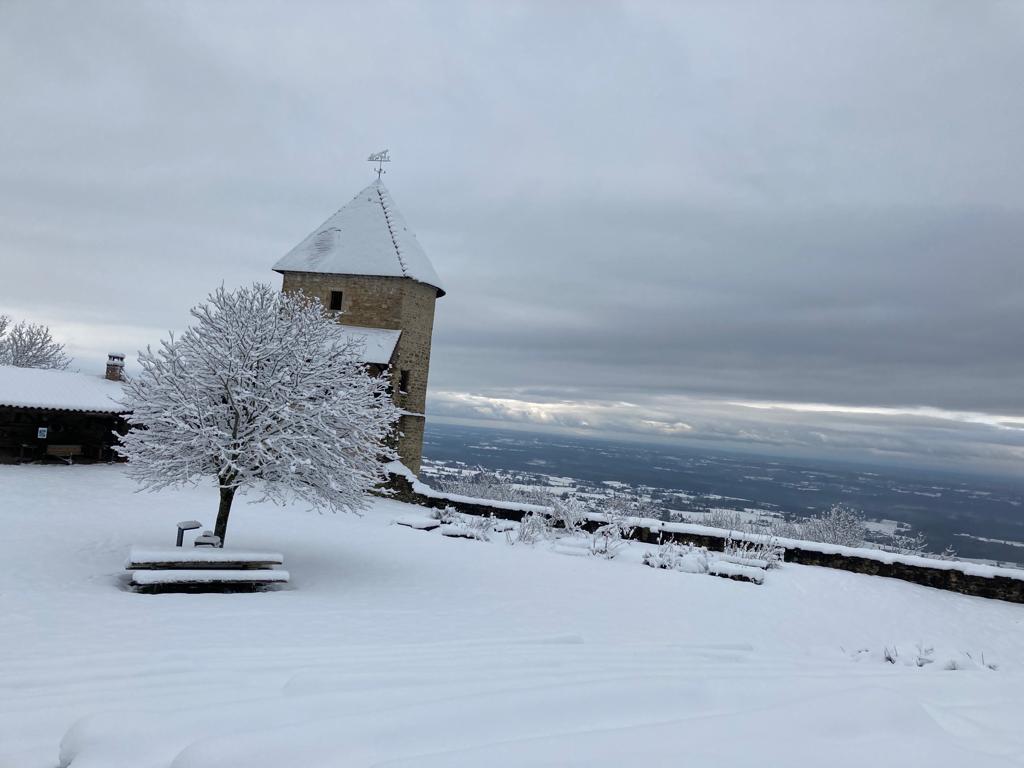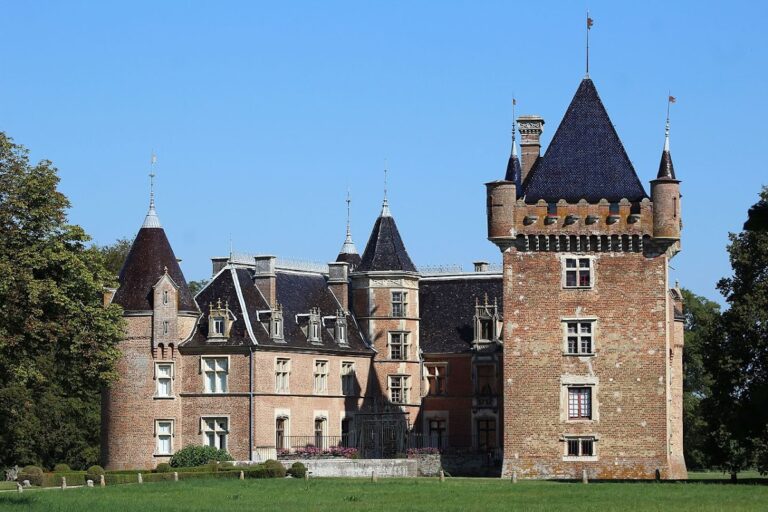Château de Chevreaux: A Medieval Fortress in Chevreaux, France
Visitor Information
Google Rating: 4.5
Popularity: Low
Google Maps: View on Google Maps
Official Website: www.chateaudechevreaux.com
Country: France
Civilization: Unclassified
Remains: Military
History
The Château de Chevreaux is located in the municipality of Chevreaux, France. This medieval fortress was constructed during the Middle Ages and first recorded in 1158 through writings by monks of the nearby Abbaye du Miroir. The lands associated with the site, known historically as “Chevrel” and “Chastel,” were originally granted in 974 by Manassès III, Lord of Coligny, to monks from the abbey at Gigny-sur-Suran, indicating an early ecclesiastical interest in the area during the early medieval period.
From its establishment, the castle functioned as the center of local lordship, or seigneurie, initially held by the Coligny family. Prominent family members such as Humbert and Guerric de Coligny oversaw the domain. In 1270, the seigneurie passed by marriage into the hands of the Montluel family, who maintained it until 1332. Subsequently, the Vienne family assumed control, holding the estate until the mid-17th century. The Damas family succeeded them after 1651. Around the beginning of the 16th century, the seigneurie was elevated to the status of a barony, reflecting its increased administrative and social importance.
The castle endured significant conflict during its history. After the death of Charles the Bold in the late 15th century, King Louis XI ordered the fortress to be taken and partially dismantled around 1480, a common practice aimed at reducing the defensive capabilities of feudal strongholds. In 1595, amid King Henri IV’s military campaign to conquer the Comté region, the castle sustained considerable damage, including the destruction of its main gatehouse.
Documentation from 1628 reveals that Château de Chevreaux was still a substantial fortified residence at that time. It contained numerous rooms including a chapel and facilities for food preparation and storage, underscoring its role not only as a military site but also as a noble household. However, during the Ten Years’ War, on April 2, 1637, the Duke of Longueville led a siege against the castle. After three days of attack, the fortress was captured, plundered, and severely damaged. The defensive keep resisted initial cannon fire but was ultimately destroyed through undermining, a siege technique involving digging tunnels below walls to collapse them. Following this event, the castle’s fortifications were partly demolished, leaving the structure in ruins.
Efforts to preserve and restore the remains of Château de Chevreaux began in 1990, allowing the site to be maintained for historical research and public access.
Remains
Château de Chevreaux occupies a strategic position on a rocky outcrop at 473 meters above sea level, commanding views over the surrounding Bresse plain. This elevated position served both defensive and observational purposes. The fortress was constructed with strong stone walls forming a curtain around its perimeter and was reinforced by multiple towers, thus creating formidable barriers against attackers.
Records from 1628 detail a complex arrangement within the castle walls, including twelve heated rooms featuring fireplaces, which provided comfort during cold seasons. A dedicated chapel reveals the presence of religious practice within the residence. The castle also housed essential domestic and agricultural facilities: a kitchen for meal preparation, vaulted cellars likely used for wine storage, several barns which would have stored grain and other produce, stables for horses, as well as dedicated ovens and a bakery space, indicating on-site food production. The presence of well-tended gardens further reflects the castle’s role as a self-sustaining noble dwelling.
The keep, or fortified tower, played a central defensive role during the 1637 siege, withstanding direct artillery fire before its destruction by undermining. Today, the remains of the keep and the curtain walls show the impact of this historic damage. The partial demolition following the siege left the castle in a ruined condition, with the destruction of key defensive structures. Restoration work initiated in the late 20th century has aimed to conserve the existing stonework and stabilize the ruins, preserving the site’s historical fabric.
Present remnants offer insight into the layered history of Château de Chevreaux, illustrating both its military significance and its function as a noble residence over several centuries.










